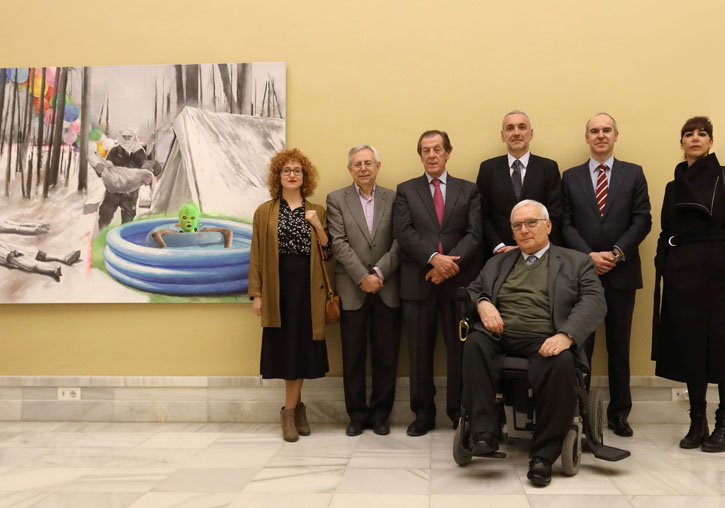
The works Nobody Will Speak of Us When We are Dead (2017) by Maria Carbonell and Zoosofias (2018) by Paloma Pájaro were chosen during the 14th Martínez Guerricabeitia Biennial out of twenty other artistic pieces presented at the City Museum of Valencia.
Martínez Guerricabeitia Biennial celebrated its 14th edition under the slogan “Naufragios” (“Shipwrecks”). Twenty works of the artists from all over Spain were exhibited from 10 December to 22 March at the City Museum of Valencia. Out of them, the pieces by Maria Carbonell and Paloma Pájaro were chosen to form a part of a collection consisting of 500 artworks.
Martínez Guerricabeitia Biennial is one of the long-standing university artistic events of the Valencian Community and stands as a suggested meeting point of the public and the selected works. Maria Carbonell ensured that she is “happy that the work will be a part of the collection”, and Paloma Pájaro affirmed that she is “greatful and surprised”.
During the 14th Martínez Guerricabeitia Biennial curated by José Pedro Martínez, a director of the activities at Martínez Guerricabeitia Collection, each artist expressed the idea of wrecks of ideologies, material and immaterial projects, and political, economical, social initiatives at various geographical and personal scales. The artists reflected on the idea from their own perspective using a wide variety of techniques and props to communicate their particular vision.
The event stood out since the two selected works had been produced by women. It is important for the winners as well. “I would like my work to speak for itself, without any gender impositions, although it is still necessary to put efforts in this. Female artists have to work more to make their work visible,” tells Maria Carbonell.
The artwork Nobody Will Speak of Us When We are Dead of the artist from Murcia, Maria Carbonell, narrates a story of the refugees and displays the migration phenomenon as the only way to survive. According to the artist, her composition “turns around the difficulties as the only form to survive because there is no other way but to look for other places, and this results in pain and loss as soon as one leaves their home.” The central figure of the work is a father with his son who died of cold in his arms. To his left, there are lifeless body limbs. In front of him, a child grieves with her look fixed on the audience, who know that at this point something goes wrong. It is a scene of suffering because, according to the artists, “no one wanted to speak about a sensitive issue.”
Meanwhile, the work of the artist from Madrid, Paloma Pájaro, presents the enigmas of evolution and involution of the human species, the artificial paradises, and the ability to stay unhappy. It is a continuous process of construction, deconstruction, and change because the transformation can take place not only while confronting the world but also while assuming the arguments which are not always nice with others. In the end, “as a consequence of the politics, the work reflects on the human war using the animals as a transcript of everything human.”
This year, the selection committee for the 14th Martínez Guerricabeitia Biennial comprised the experts of the galleries of Artnueve (Murcia), Espai Tactel (València), Gema Llamazares (Gijón), La Gran (León), Pilar Serra (Madrid), as well as the renowned critics in the field of contemporary art Paula Achiaga, Susana de Blas, Ángel Calvo, Javier Castro, and Regina Pérez.




